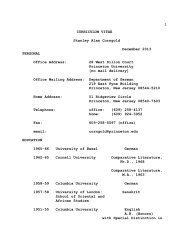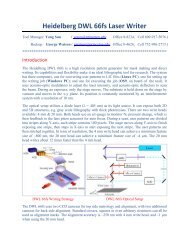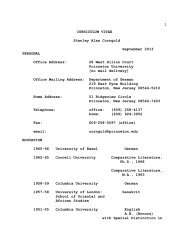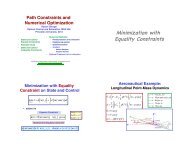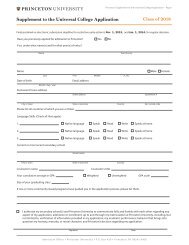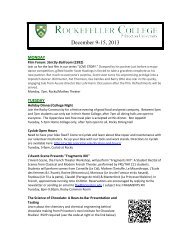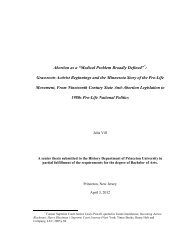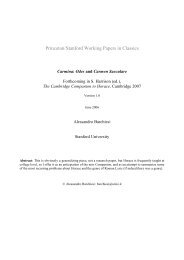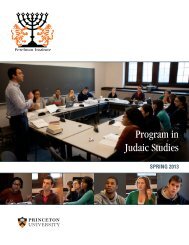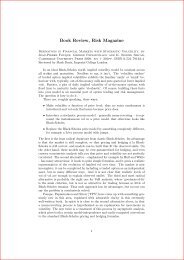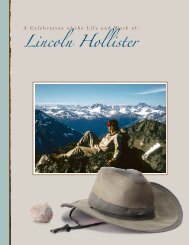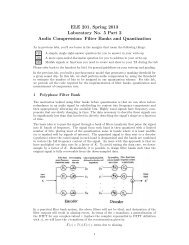George Larkin and the London literary underground 1666-1690 ...
George Larkin and the London literary underground 1666-1690 ...
George Larkin and the London literary underground 1666-1690 ...
Create successful ePaper yourself
Turn your PDF publications into a flip-book with our unique Google optimized e-Paper software.
© Martin Dzelzainis 4<br />
Bookes & Pamphlets’. 8 But when Calvert was eventually proceeded against it was for a<br />
different offence committed several weeks later on 20 May 1668. Moreover, it was not until<br />
1670-71 that she was actually indicted, tried, <strong>and</strong> convicted in connection with Directions to a<br />
painter, for describing our naval business, which featured four advice poems.<br />
When belatedly indicted, Calvert faced three witnesses. 9 Joshua Waterhouse was an<br />
apprentice printer freed by Calvert in August 1669. Thomas Willis had been committed to <strong>the</strong><br />
Gatehouse in 1668 ‘for dispersing sc<strong>and</strong>alous & seditious Pamphlets’ <strong>and</strong> so could speak to<br />
her publishing <strong>the</strong> Directions. 10 That leaves <strong>Larkin</strong>, who turns out to have been both a printer<br />
of seditious libels <strong>and</strong> an informer against fellow members of <strong>the</strong> <strong>underground</strong>. His name <strong>and</strong><br />
his wife’s also appear on <strong>the</strong> indictments of John Darby <strong>and</strong> Nathan Brookes. He had become<br />
an informer for L’Estrange by October 1670, when Arlington authorized conditional<br />
immunity for <strong>Larkin</strong> ‘from whose Wife it seems you haue recieued some considerable helpes<br />
(by <strong>the</strong> Priuity <strong>and</strong> direction of her husb<strong>and</strong>) towards your late discouery of seditious<br />
Phamphetts[sic]’. 11 With <strong>Larkin</strong> (who had presumably printed <strong>the</strong> Directions at Poole’s<br />
house) now cooperating, <strong>the</strong> way was clear for a prosecution of Calvert. 12<br />
So <strong>the</strong> first phase of <strong>Larkin</strong>’s career was brief <strong>and</strong> spectacular. First he prints a classic<br />
spiritual autobiography, a caustic anticlerical satire, <strong>and</strong> unquestionably <strong>the</strong> most important<br />
political satires of <strong>the</strong> decade. And <strong>the</strong>n he’s turned by <strong>the</strong> authorities Does that make him a<br />
radical? Does that mean he stopped being one? Can you become a radical again having<br />
stopped once before? Or is it somewhat like being an alcoholic, which you always remain<br />
even if you’re currently abstaining?<br />
**<br />
For <strong>the</strong> duration of <strong>the</strong> 1670s <strong>Larkin</strong> was in L’Estrange’s pocket. Having lost his Southwark<br />
press, he was set up as a printer in Westminster by <strong>the</strong> royalist Captain John Seymour who in<br />
1669 was granted <strong>the</strong> lucrative right to print almanacs. This challenged <strong>the</strong> Stationers’<br />
presumed monopoly in almanacs, <strong>and</strong> <strong>the</strong>y used <strong>the</strong>ir powers of search <strong>and</strong> seizure to put<br />
<strong>Larkin</strong> out of business. Seymour responded by moving his press – still managed by <strong>Larkin</strong> –<br />
8<br />
The National Archives (hereafter NA), SP 44/30/28r (CSPD 1667-1668, 363).<br />
9<br />
See Corporation of <strong>London</strong> Records Office (hereafter CLRO), Sessions File 205.<br />
10<br />
NA, SP 44/28/12r (CSPD 1667-1668, 178).<br />
11<br />
NA, SP 44/34. f.52r (misnumbered 54) (CSPD 1670, 486). For a draft text, see SP 29/251/136<br />
(CSPD 1668-1669, 133-34; undated).<br />
12<br />
The crucial piece of evidence is a list of presses seized by <strong>the</strong> Stationers, probably drawn up in 1677<br />
at <strong>the</strong> time when <strong>the</strong> Lords Libels Committee was meeting, in which <strong>the</strong> first item is ‘One Press set upp<br />
in <strong>the</strong> Rules of <strong>the</strong> Kings Bench by one <strong>George</strong> <strong>Larkin</strong> at which was printed Advise to a Painter, Cobler<br />
of Gloucester Dyers Works all brought to Whitehall’(Stationers’ Company, Box A, envelope 11, item<br />
(ii) (Reel 97); for a draft, with <strong>the</strong> date ‘Anno 1668’ struck through, see item (i)).The “rules” comprised<br />
an area outside <strong>the</strong> walls of <strong>the</strong> King’s Bench prison <strong>and</strong> covering about two thirds of St <strong>George</strong>’s<br />
parish where prisoners were allowed to live on payment of a security, though for legal purposes <strong>the</strong><br />
area counted as an extension of <strong>the</strong> prison walls. Geographically, <strong>the</strong> Mint was comprehended within<br />
<strong>the</strong> Rules.




